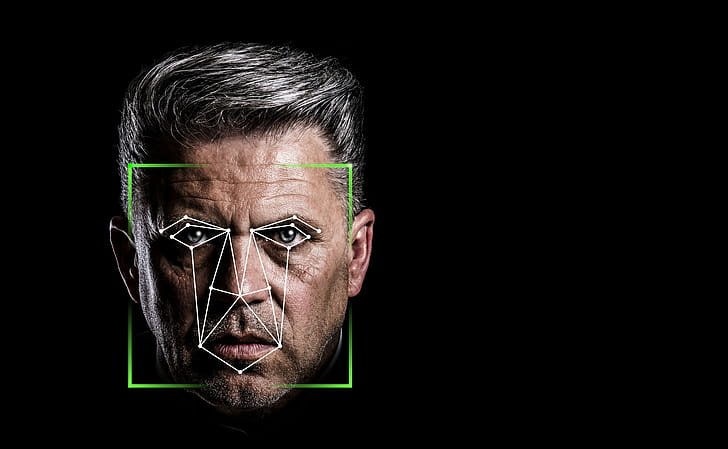As I sit here in late 2024, I’m struck by how much our relationship with digital information has changed in just a few years. For someone who’s spent their career studying information systems, the sunsetting of traditional Whois lookup services represents one of the most significant shifts in how we manage digital identity and ownership online.
For those unfamiliar, Whois (pronounced “who is”) has been the internet’s phonebook since the early days of the web. When someone registered a domain name, their contact information—name, address, phone number, email—became publicly accessible through Whois databases. This transparency was originally designed to allow people to contact website owners if problems arose, but it ultimately created a perfect hunting ground for spammers, identity thieves, and other malicious actors.
The Privacy Reckoning
The beginning of the end for public Whois records coincided with the implementation of the European Union’s General Data Protection Regulation (GDPR) in 2018. This watershed moment forced many domain registrars and internet authorities to reconsider their approach to personal data. Seven years later, we’re witnessing the culmination of this shift as traditional Whois services are being systematically dismantled or heavily restricted.
“What we’re seeing isn’t just a technical change—it’s a philosophical one,” explains Dr. Marta Chen, digital privacy researcher at Yale University. “We’ve moved from an internet built on radical openness to one increasingly concerned with individual privacy rights.”
This migration away from public Whois databases has created both opportunities and challenges. Domain owners no longer need to choose between online presence and personal privacy. However, this same privacy shield has complicated legitimate research, security investigations, and intellectual property enforcement.

Privacy – The Current Landscape
By 2025, most major domain registrars have implemented “redacted Whois” systems, where personal information is hidden by default. Internet users seeking domain ownership information now encounter privacy shields, proxy services, and tiered access systems instead of the open directories that characterized the early internet.
The International Corporation for Assigned Names and Numbers (ICANN), which governs domain name policies globally, has spent years trying to create a balanced replacement system. Their Registration Data Access Protocol (RDAP) now allows authorized parties to request redacted information through a structured process, but approval is neither guaranteed nor immediate.
“We’re operating in a new paradigm where data access requires justification,” says Marcus Williams, cybersecurity consultant. “The days of open, anonymous lookups are essentially over, which creates friction for legitimate security researchers but also for bad actors.”
Law enforcement agencies, intellectual property attorneys, and cybersecurity professionals have expressed frustration with these changes. Investigations that once took minutes now involve formal requests, legal documentation, and waiting periods. Meanwhile, those with malicious intent have found the privacy protections convenient for masking their activities.
Privacy – Real-World Impacts
The effects of this transition extend far beyond technical discussions among internet governance bodies. Consider these examples from recent months:
-
Consumer Protection Challenges: When a wave of fraudulent e-commerce sites appeared before the 2024 holiday season, consumer protection agencies struggled to identify the operators behind these scams. Information that once would have been immediately available through Whois now required court orders to access.
-
Security Research Bottlenecks: Security researchers tracking a ransomware campaign targeting healthcare facilities found their investigation hampered by inability to quickly determine common ownership across suspicious domains.
-
Journalism Obstacles: Investigative journalists examining political disinformation networks faced significant delays when trying to connect related websites to their operators.
However, there are positive developments as well:
-
Reduced Harassment: Website owners, particularly those running politically sensitive or minority-focused sites, report dramatic decreases in targeted harassment since their personal details became private by default.
-
Professional Alternatives: New services have emerged offering “verified sender” capabilities, allowing legitimate communication with domain owners while protecting their identity.
-
Enhanced Privacy Options: Domain registrars now offer sophisticated gradations of privacy, letting site owners determine precisely what information is visible and to whom.
Finding the Balance
The most interesting developments aren’t coming from those arguing for a complete return to public Whois or those demanding absolute privacy. Instead, they’re emerging from technologists, policymakers, and academics exploring middle paths.
“What we need isn’t unrestricted access or impenetrable privacy,” argues Professor James Nakamura at MIT’s Internet Policy Research Initiative. “We need contextual, purpose-limited, accountable access systems that protect legitimate personal privacy while enabling necessary security and accountability functions.”

Several promising approaches are gaining traction:
Pseudonymous Verification – Privacy
Several registrars now offer systems where domain owners can verify certain attributes (like business legitimacy or non-malicious intent) without revealing personal details. These “trust badges” or verification tokens provide confidence without compromising privacy.
Escrow Communication – Privacy
New services function as trusted intermediaries, allowing messages to reach domain owners without exposing either party’s identity until they choose to connect. This preserves privacy while enabling legitimate communication.
Differential Privacy Implementations
Some registrars are experimenting with techniques that provide useful aggregate data for research and security purposes while mathematically guaranteeing individual privacy protections.
Graduated Access Systems
The most sophisticated approach involves tiered access where different parties receive different levels of information based on their verified identity, legitimate purpose, and legal authority.
The Path Forward
As we look ahead to 2026 and beyond, it’s clear that the complete sunsetting of traditional Whois represents not an endpoint but a transition to more nuanced information sharing systems. The central question isn’t whether domain ownership data should be public or private, but rather: who should have access to what information, under what circumstances, and with what safeguards?
Domain registration data sits at the intersection of competing legitimate interests:
- Individual privacy rights
- Consumer protection needs
- Security research requirements
- Law enforcement necessities
- Intellectual property enforcement
- Free expression protections
No single approach can perfectly satisfy all these concerns, but the emerging consensus favors contextual, purpose-limited access with appropriate oversight and accountability.
“We’re moving toward a model where access to registration data requires justification, verification, and potentially even compensation to the data subject,” explains Dana Rodriguez, privacy attorney. “This isn’t about making information inaccessible—it’s about ensuring access serves legitimate purposes while respecting fundamental rights.”
Lessons for Other Data Systems
What’s particularly fascinating about the Whois transition is how it serves as a microcosm for broader societal reckonings with data privacy. The same principles being debated here—contextual access, purpose limitation, data minimization, and user control—are reshaping everything from social media to financial services.
The sunsetting of public Whois teaches us several key lessons:
- Systems designed for a small, trusted community often break when applied at internet scale
- Default publicity of personal information creates asymmetric risks for vulnerable individuals
- Binary public/private dichotomies fail to address nuanced information sharing needs
- Retrofitting privacy into existing systems is significantly harder than designing for it initially
- Technical solutions must be accompanied by policy frameworks to be effective
Personal Reflections
As I preserve this moment in digital history, I’m struck by how the Whois transition reflects broader cultural shifts in our relationship with technology. In the early internet era, the default assumption was that information should be free and open. The pendulum then swung toward privacy absolutism as we witnessed the harms of unrestricted data flows.
Now, we’re seeking more sophisticated, contextual approaches—recognizing that information sharing carries both benefits and risks that must be carefully balanced. As someone who values both transparency and privacy, I find this evolution encouraging, if messy and incomplete.
The most promising sign is that we’re moving beyond simplistic debates about whether data should be public or private, and instead asking more nuanced questions about appropriate access models, consent mechanisms, and governance structures.
When future digital historians look back at this transition period, I hope they’ll see it not just as the end of an outdated system, but as the beginning of a more thoughtful approach to information sharing—one that respects individual dignity while enabling the legitimate functions that keep our digital world safe and functional.
The future of digital identity and ownership transparency won’t look like the wide-open Whois of the past, nor will it embrace absolute opacity. Instead, it will likely feature sophisticated systems of verified, purpose-limited access, with individuals retaining meaningful control over their personal information while enabling necessary oversight functions. And that seems like progress worth celebrating.



